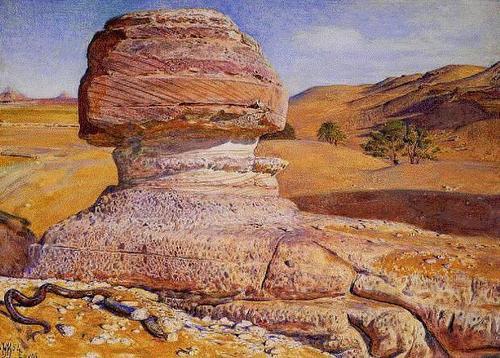الأربعاء، 2 ديسمبر 2009
An unusual view of the Sphinx
It took me a while to sort this one out. The painting is labelled The Sphinx, Gizeh (1854) by William Holman Hunt [pre-Raphaelite, 1827-1910].
The view is from the back, which we seldom see, and the painting depicts the Sphinx in the mid-nineteenth century, before the accumulated sand was removed from the base.
I believe the painting also depicts the vertical erosion of the component rocks, a marker of water/rain erosion rather than wind erosion (which tends to be horizontal). This feature has been a focal point of some note in arguments regarding the dating of the Sphinx.
Source, via (exclamation mark).
Here's another view, this time from the front and just a few decades later:
Identified as follows: Henri Béchard (active 1870s & 80s); ‘Le Sphinx Armachis, Caire’ (The Sphinx Armachis, Cairo), about 1880; Albumen print; 21 x 27cm. (National Media Museum).
Showing the forelegs buried in the sand. The importance of water erosion is that (if true) it would imply a creation date thousands of years before the Egyptian dynasties. It's an intriguing hypothesis.
Also via (exclamation mark).
الاشتراك في:
تعليقات الرسالة (Atom)


ليست هناك تعليقات:
إرسال تعليق